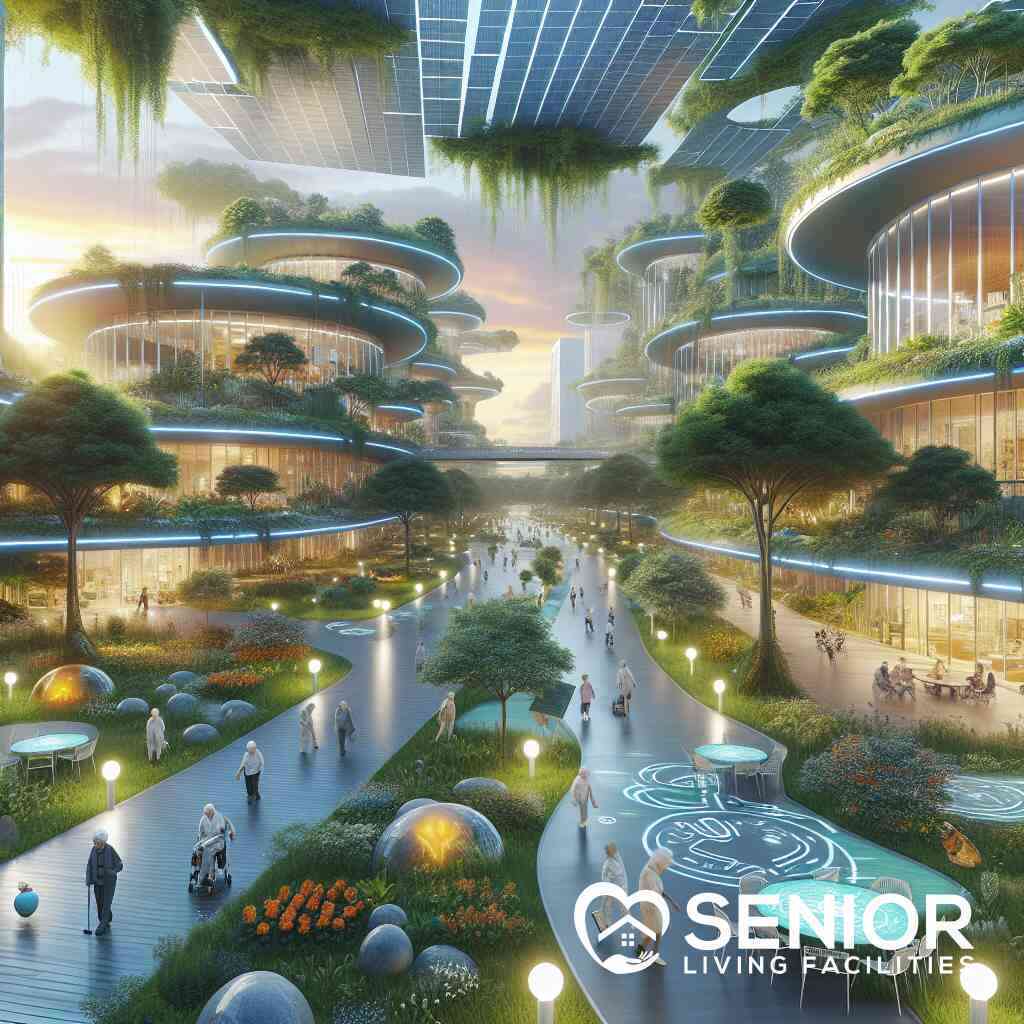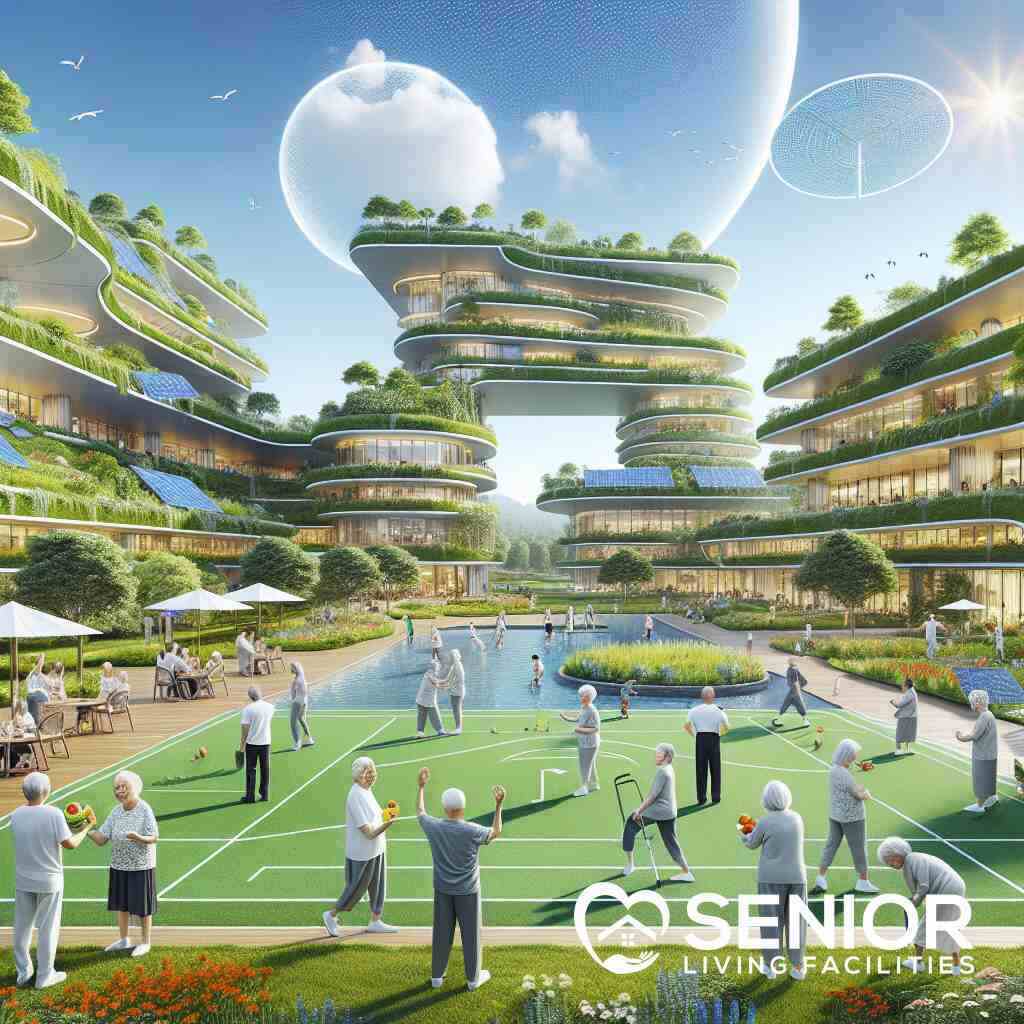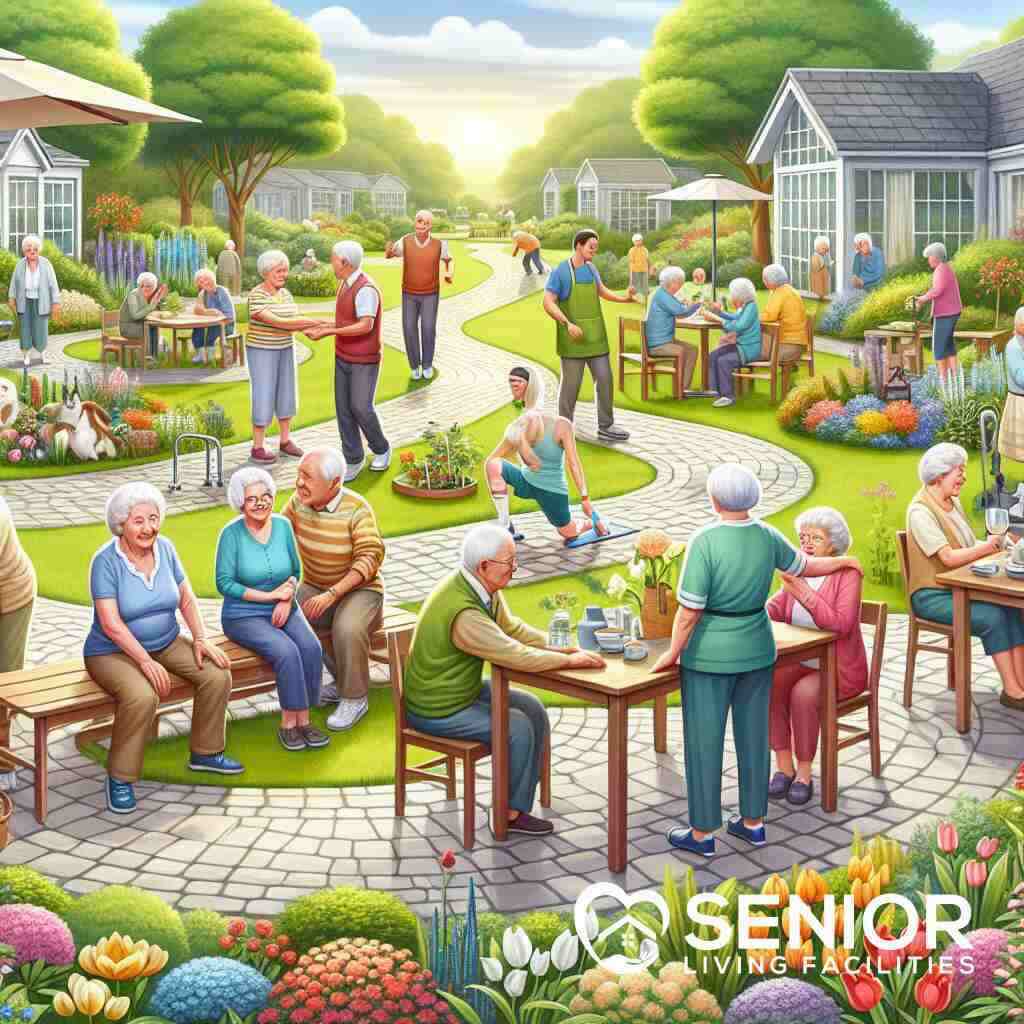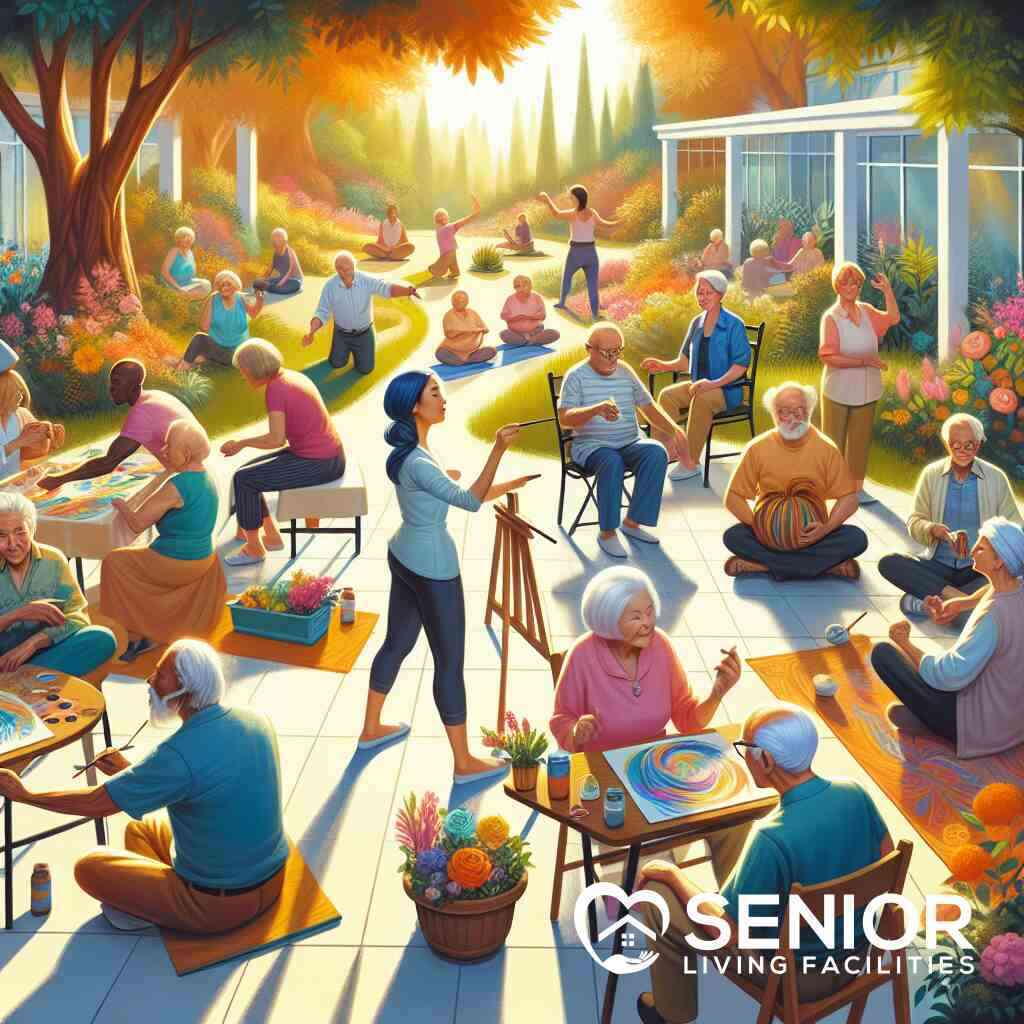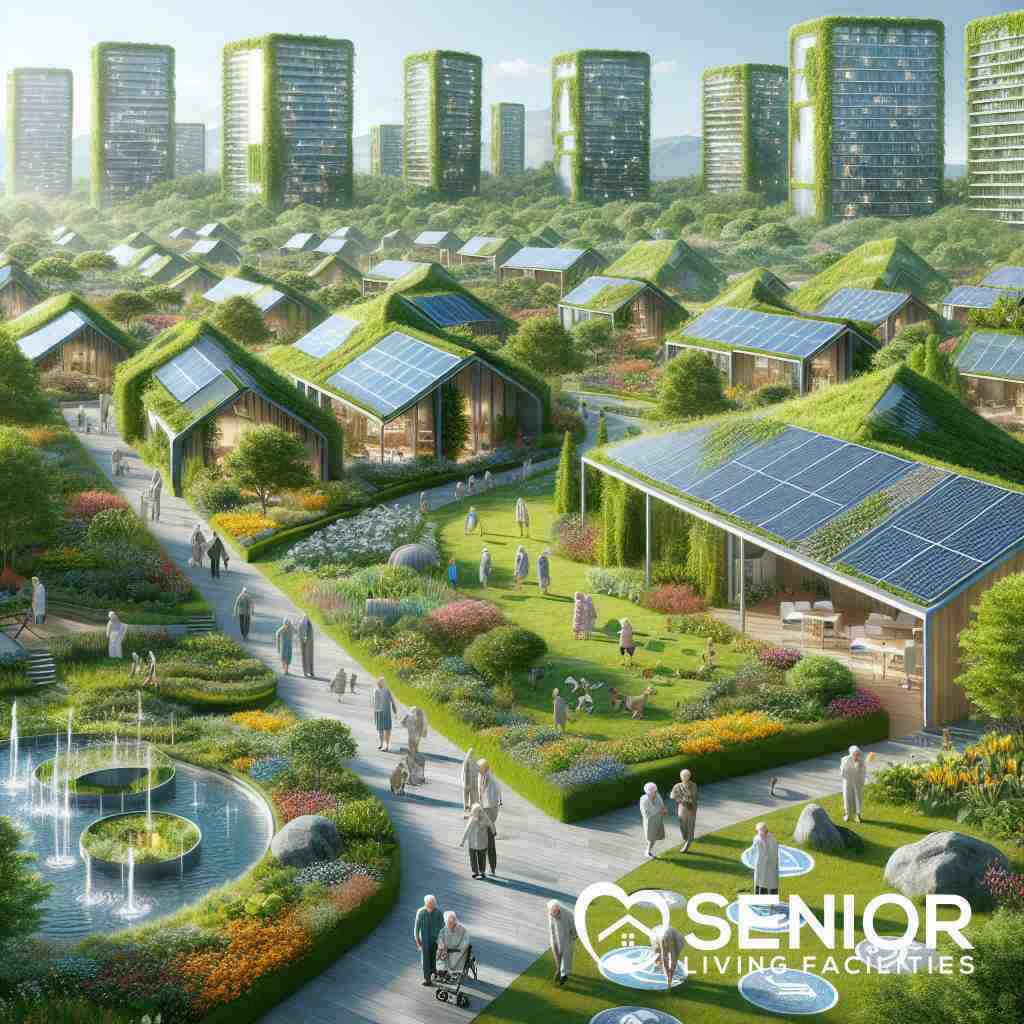
The Ultimate Guide to Senior Living for 2025
February 20, 2025
Envisioning Tomorrow’s Senior Living Paradigm
The Evolution of Senior Housing Trends for 2025
As society evolves, so too does our approach to senior housing. In 2025, the senior living landscape has come a long way from traditional models, integrating contemporary comforts and cutting-edge technologies. The evolution of senior housing innovation 2025 reflects an understanding of seniors’ diverse needs, focusing on not just care but also life enrichment. Today’s senior living facilities offer extensive community-based amenities designed to engage and empower residents. This transformation in senior housing trends speaks to a broader vision of aging gracefully in communal settings that inspire vitality and foster community.
Modern Senior Housing: A Leap into the Future
In the modern age, senior housing takes an innovative leap forward, melding comfort with futuristic solutions. As communities aim to accommodate the burgeoning senior population, new structural designs emphasize flexibility and accessibility. Housing options for seniors now feature adaptive spaces tailored to their functional needs while packing in smart technologies that bring convenience and security. Whether you seek a senior apartment rental or housing within a complex of smart homes for seniors, the emphasis remains on creating a supportive environment that promotes independence and well-being. Such advancements are not just upgrades but a revolution in senior living facilities near Arizona and across the nation.
Senior Communities of the Next Generation
Next-generation senior communities transcend the traditional boundaries of retirement living, offering a vibrant mix of social and recreational opportunities. These communities are designed with a focus on sustainability, advocating for eco-friendly senior communities. They integrate green technologies and sustainable practices to create environmentally conscious living arrangements. Beyond sustainability, they encourage social connections and inclusivity, providing an avenue for seniors to nurture relationships and actively participate in community life. Such inclusive models forecast a compelling future for senior housing, ensuring that seniors not only live but thrive in nurturing surroundings that cater to their holistic needs.
Revolutionizing Senior Living through Technology
Innovative Senior Living Solutions: Bridging Age with Technology
The year 2025 heralds a new era where age meets technology in beautifully orchestrated harmony. Innovative senior living solutions are at the forefront, transforming traditional living spaces into vibrant places of opportunity. These solutions encompass everything from smart devices that anticipate residents’ needs to virtual reality programs that offer new worlds and experiences. By integrating cutting-edge devices, communities for seniors 55+ ensure their inhabitants stay connected, entertained, and independent. The synergy of technology and community is paving the way for future generations, ensuring that senior living facilities continuously adapt to match the dynamic pulse of societal advancements.
Beyond hardware, the software is equally pivotal. Platforms that track health metrics and alert caregivers to potential needs redefine how the elderly engage with their health. This transformation nurtures a secure, healthier, and happier lifestyle, making use of advances in senior care technologies. Facilities are now hotspots of innovation, leveraging these advancements to foster a personalized approach to eldercare, ensuring every senior feels valued and heard.
Smart Homes for Seniors: Enhancing Daily Living
In smart homes for seniors, technology is seamless and intuitive, designed to enhance daily living without intruding on comfort. These smart environments incorporate devices that react to voice commands or even motion, simplifying everyday tasks such as adjusting lighting, securing doors, or managing entertainment systems. Here, the philosophy is simple: empower residents through autonomy without compromising safety. These innovations transform senior living into a liberating and fulfilling experience, where aging gracefully in future homes becomes a reality.
Moreover, the application of Internet of Things (IoT) technology facilitates a network of interconnected devices that optimize resource usage and support healthy living arrangements. With smart homes, senior housing options evolve into supportive systems that function like a well-oiled machine, aligning routines in the most beneficial ways. As a result, what’s visible is an unwritten promise that tomorrow’s seniors can dwell in spaces designed with them in mind, reshaping independent living paradigms.
Senior Digital Solutions: The Role of AI and IoT in Assisted Care
Artificial intelligence (AI) and IoT emerge as powerful allies in the landscape of assisted care, serving as pillars that sustain the future of senior living innovation. They offer tools that extend beyond personal assistance, such as predictive analytics for health monitoring, integrating seamlessly into daily routines. These senior digital solutions not only detect patterns but also anticipate issues, empowering caregivers to intervene before minor concerns escalate into significant health events. Thus, AI and IoT are key players in safeguarding seniors’ well-being, providing an additional layer of confidence for families.
Incorporating these technological advancements allows senior living facilities to bridge the gap between personalized care and technological support, effectively marrying the two. The result is a more nuanced and responsive living environment capable of adapting to its residents’ changing health requirements. With a focus on fostering independence and promoting community-based senior care, these integrated senior healthcare solutions are guardians of tomorrow’s seniors, ushering in an era where technology consistently enriches human connection and care.
Sustainability and Well-being in Senior Communities
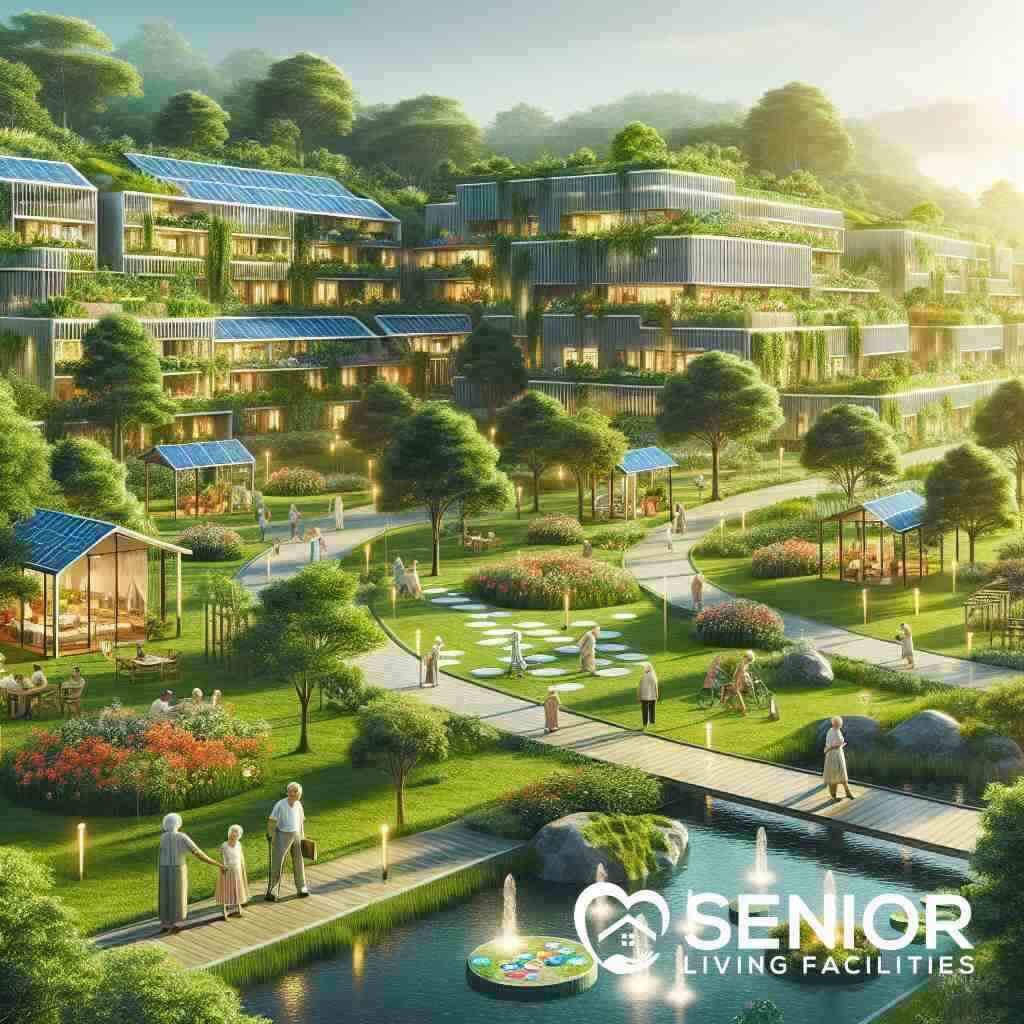
Eco-Friendly Senior Communities: Living Green
The transition into eco-friendly senior communities signifies a broader commitment to sustainable senior housing design. As these communities blossom, they emphasize reducing the carbon footprint while embracing renewable energy sources. Senior housing is being reimagined with energy-efficient appliances, green spaces, and sustainable architecture, reflecting an eco-conscious ethos. These elements contribute to a healthier environment and promote a sense of stewardship among residents. Moreover, sustainable practices extend into waste management and water conservation, ensuring that seniors live in harmony with nature. This green design ensures an enriching habitat that aligns with the values of today’s environmentally aware seniors.
Seniors residing in such communities benefit from enhanced indoor air quality and reduced exposure to harmful chemicals, promoting healthy senior lifestyles in 2025. The integration of biophilic design principles in senior living facilities fosters a connection with the natural world, enriching residents’ mental and physical well-being. These advancements are not just technical alterations but foster a holistic living experience, prioritizing health and longevity. The continued push towards eco-friendly solutions in senior living showcases a dedication to both current and future generations, offering an inspiring example of responsible living.
Integrated Senior Health Care and Well-being Programs
Integrated senior health care and well-being programs are pivotal in modern senior living facilities, offering comprehensive care strategies that address both physical and mental wellness. Today’s senior living options integrate holistic health initiatives with technological advancements to provide seamless healthcare services. These programs monitor health metrics and dietary needs while ensuring access to medical support around the clock. Such inclusive systems reflect the broader commitment to advances in senior care improvements, paving the way for a healthier elderly population.
These well-being programs often include physical fitness activities, nutritional counseling, and mental health support, leaving no stone unturned in the pursuit of wellness. By offering a blend of preventive healthcare measures and therapeutic exercises, integrated healthcare programs ensure a proactive approach to senior health. Such initiatives align with the overarching goal of fostering independence and vitality within senior communities. The synergy between healthcare and daily living activities cultivates an environment where seniors thrive, ensuring they live full and satisfying lives.
Community-Based Senior Care: Fostering Social Connections
Community-based senior care strategies are transforming the way elder care is approached, focusing on building social connections and fostering communal harmony. These community-centered care models provide opportunities for seniors to engage, share experiences, and develop meaningful relationships within their living environment. As the concept of community care for aging people evolves, the emphasis on mental health and social engagement has become paramount.
Senior living facilities are creating spaces and activities that encourage interaction, such as group exercises, cultural events, and shared dining experiences. These initiatives not only enrich the lives of residents but also build a supportive network among peers. By facilitating an environment where seniors can connect and contribute, community-based care models address feelings of loneliness and isolation often experienced in traditional elder care settings.
By promoting active participation and mutual support, these communities empower seniors, allowing them to participate meaningfully in communal life. This paradigm shift in elder care underscores the importance of companionship, shared values, and collective growth, setting a precedent for progressive senior living options worldwide. The focus on fostering social connections confirms the commitment to not only maintaining but elevating the quality of life for seniors in a rapidly changing world.
Personalized and Adaptive Living: Tailoring the Experience
Personalized Senior Living: Customizing Care Plans
Advancements in senior care have introduced a new era of personalized living options for seniors. Customization isn’t just a bonus; it’s a necessity. Senior living facilities understand that no two residents are the same, highlighting the complexities of cognitive wellness. Therefore, care plans are tailored individually, focusing on chronic health conditions, personal preferences, and lifestyle choices. The aim is to accommodate each senior’s unique path to wellness, ensuring that they receive care and amenities suited specifically to their needs. This approach creates a nurturing environment that prioritizes both comfort and individual expression.
These facilities employ sophisticated data analytics to monitor health patterns and predict care needs, providing proactive solutions rather than reactive fixes. By integrating such technology, senior communities can offer a responsive living experience that evolves as residents’ needs change. The emphasis on personalized senior living mirrors a broader commitment to enhancing the quality of life and ensuring that seniors feel respected and valued. It is this empathetic, forward-thinking approach that truly sets modern senior housing apart.
Adaptive Senior Living: Designing for Accessibility and Comfort
As the senior population grows, the demand for adaptive senior living spaces increases. These innovative spaces are designed to accommodate varying levels of mobility and functionality, ensuring that physical limitations don’t restrict independence. Adaptive design incorporates wider doorways, lowered countertops, and slip-resistant flooring, to mention a few, creating an environment where seniors can navigate with ease and security.
Beyond physical adaptations, these living spaces often feature communal areas that encourage social interactions and communal activities, enhancing both mental well-being and social connectivity. In addition, technological integrations such as dynamic lighting and automated climate control systems further comfort by tailoring ambient conditions to individual preferences. This seamless fusion of technology and thoughtful architecture in senior living transforms spaces into sanctuaries of empowerment and self-sufficiency.
The adaptability inherent in these designs makes them invaluable in the pursuit of creating inclusive, supportive environments for seniors. As communities continue to prioritize accessibility, they pave the way for a new standard in senior care that recognizes and respects the varied needs of each resident.
Aging in Place Solutions: Maintaining Independence
In 2025, aging in place will be an integral part of senior living strategies. Solutions geared towards maintaining independence enable seniors to live comfortably within familiar environments. This approach is not about encouraging isolation but about providing services and modifications that allow seniors to thrive within their homes. Involving smart home technology such as voice-activated systems and health monitoring devices, these solutions help seniors manage daily tasks effortlessly.
Maintaining independence also involves creating a support network that integrates with the community’s healthcare services. Mobile care teams and telehealth services extend the reach of healthcare professionals, ensuring prompt and efficient medical attention when necessary. By localizing care and crafting inclusive communities, seniors can enjoy greater autonomy while still accessing essential services.
Such comprehensive aging-in-place solutions highlight the importance of maintaining personal independence alongside robust support systems. It reflects the paradigm shift toward a senior living model that actively supports the dignity and choices of its residents. By prioritizing individuality within a community framework, these solutions provide a blueprint for satisfying, independent eldercare.
Holistic and Progressive Lifestyle Options for Seniors
Senior Lifestyle Enhancements: Fostering Active Aging
The landscape of senior living is increasingly vibrant, emphasizing lifestyle enhancements that nurture active aging. In 2025, these enhancements will manifest in forms that prioritize wellness, engagement, and personal growth for seniors. Communities are integrating tailored fitness programs, arts, and cultural pursuits to elevate the day-to-day experiences of their residents. With a renewed focus on lifelong learning and purpose-driven activities, senior lifestyle enhancements aim to foster resilience and encourage active participation across diverse interests. Notably, urban areas present unique opportunities to implement such enhancements, driving a synergy between city life and senior well-being. Embracing senior lifestyle enhancements in urban areas allows communities to leverage city resources, from galleries to workshops, creating retirement landscapes where seniors thrive amidst the cultural pulse.
Programs are designed with the foresight of adapting to varied mobility levels, ensuring all seniors can partake safely and confidently. This holistic approach not only makes the most of physical spaces but also prioritizes mental and emotional health. Tailored activities seek to minimize the risk of cognitive decline, promoting the kind of holistic vibrancy that transforms traditional concepts of aging into empowering narratives of life. By embedding these enhancements into urban settings, the potential for seniors to engage deeply with themselves and their surroundings is immeasurably enriched.
Senior Wellness Programs 2025: Mind, Body, and Soul
In 2025, senior wellness programs converge on a triadic focus targeting the mind, body, and soul. The aim is to balance physical health with mental acuity and spiritual well-being, forging pathways to comprehensive senior health. Wellness programs are constructed with personalized approaches, incorporating mindfulness sessions, therapeutic exercises, and nutrition plans that respect individual preferences and health conditions. The overall strategy is prevention, empowerment, and engagement.
Communities are championing senior wellness programs that incorporate the latest advancements in healthcare and wellness technology. These programs involve integrative therapies such as yoga, meditation, and Tai Chi, alongside cognitive training activities that keep the mind agile. Nutrition also takes center stage, with communities offering dietician-led meal planning and cooking classes to ensure seniors receive optimal nourishment.
Beyond the tangible health benefits, these wellness approaches cultivate a sense of community, encouraging bonds between residents as they embark on shared journeys of health improvement. The comprehensive nature of these programs reflects a forward-thinking ethos that values seniors not just as participants but as active agents in managing their well-being, driving a future where aging gracefully is both an art and a science.
Innovative Community Spaces: Redefining Communal Living
Innovative community spaces are redefining how seniors experience communal living, transforming places of necessity into hubs of opportunity and belonging. Architectural ingenuity and thoughtful planning come together to create environments that foster connection, creativity, and well-being. These spaces are designed to be flexible, responding to the diverse needs and desires of senior residents, from social gatherings to quiet contemplation.
The concept of communal living in 2025 transcends traditional boundaries, offering facilities that enhance social interaction and personal enrichment. Whether through maker spaces, libraries, or garden plots, seniors are encouraged to explore new passions and strengthen community ties. The incorporation of technology in these spaces supports everything from virtual reality tours of art exhibits to smart scheduling of community events, broadening possibilities for engagement.
Moreover, adopting principles from sustainable senior housing design, these spaces emphasize eco-conscious practices, blending aesthetics with functionality. The green spaces intermingle with built environments, providing restful, rejuvenating corners that highlight the harmony between nature and structured life. Through these innovative spaces, senior living communities cultivate a robust ethos of inclusion and exploration, reflecting evolutionary shifts in communal dynamics and setting benchmarks for future developments.
Concluding Thoughts: Paving the Way for the Future of Senior Living
Transforming Senior Housing: The Path Ahead
As we move towards 2025, the task of transforming senior housing futures involves an intricate blend of innovation, compassion, and foresight. It is imperative to adopt a holistic approach that integrates technology with personalized care to cater to diverse needs. We foresee housing options for seniors evolving to become adaptive and inclusive, promoting seamless transitions through various stages of aging. This transformation not only enhances the quality of life but also fosters independence, ensuring seniors live comfortably while being part of a vibrant and supportive community. Encouraging sustainability and integrating society-centric technological advancements will mold senior living into a beacon of modernity and care.
Evolving Senior Communities: Challenges and Opportunities
The evolving landscape of senior communities presents both challenges and opportunities, necessitating a dynamic approach to elder care. Challenges such as integrating cutting-edge technology without overwhelming residents and balancing accessibility with advanced features require strategic planning. Opportunities lie in fostering connections and leveraging technology to enhance community engagement. By addressing these hurdles with adaptive senior living solutions, facilities can ensure inclusivity and accessibility. The focus remains on creating nurturing environments where seniors thrive emotionally and physically. As senior living initiatives evolve, they pave the way for discussions on enhanced care approaches and sustainable practices, enriching the tapestry of communal life.
The Road to Senior Living Innovation: Key Takeaways
Milestones of progress and adaptation punctuate the path to senior living innovation. Key takeaways include the undeniable impact of personalized care plans and the pivotal role of technology in enhancing independence and well-being. Embracing advances in senior care technology is crucial, as well as integrating AI and IoT for responsive healthcare solutions. The roadmap to the future envisions senior communities that are more than just spaces for living; they are hubs of inspiration, growth, and empowerment. It’s essential to remain committed to continuous improvement, addressing current needs while anticipating future trends. Senior Living Facilities are poised to be at the forefront of this change, guiding families to better senior futures.
In summary, transformative strategies and a commitment to enriching the quality of life will drive the evolution of senior living. By uniting innovative solutions with compassionate care, we aim to redefine what it means to age gracefully in tomorrow’s senior communities. Through our comprehensive approach, Senior Living Facilities ensures that every senior has access to environments designed for thriving in every moment.
Frequently Asked Questions
Question: How do Senior Living Facilities incorporate innovative senior living solutions, as mentioned in The Ultimate Guide to Senior Living for 2025?
Answer: Senior Living Facilities integrate innovative senior living solutions by leveraging cutting-edge technologies such as IoT and AI to enhance the quality of life in senior communities. Our platform features smart homes for seniors that support independence and safety, promoting convenience for daily activities through voice-activated systems and predictive health monitoring. By staying abreast of technological advancements, we ensure our communities for seniors 55+ are well-equipped to meet current and future needs, providing peace of mind for residents and their families.
Question: What role does sustainability play in the senior communities featured on the StheeseniorLiving Facilities’ platform?
Answer: Sustainability is a core component of the senior housing options available through Senior Living Facilities. We feature eco-friendly senior communities that prioritize reducing carbon footprints, incorporating renewable energy and energy-efficient systems. By embracing sustainable senior housing design, our communities not only protect the environment but also promote healthier living conditions for seniors. This commitment to sustainability aligns with the values of many of today’s seniors, offering an enriching and environmentally conscious lifestyle.
Question: Can you elaborate on how Senior Living Facilities ensure a personalized senior living experience?
Answer: At Senior Living Facilities, personalization is key. We offer adaptable senior living spaces that cater to individual preferences and needs. By utilizing data analytics and health monitoring technologies, our communities anticipate and respond to residents’ requirements, providing tailored care plans. Whether it’s through rental housing for seniors or integrated health care strategies, our focus is on ensuring each resident receives personalized attention, which enhances their independence and quality of life.
Question: How do Senior Wellness Programs in 2025, as mentioned in your guide, enhance residents’ mental, physical, and spiritual well-being?
Answer: Senior Living Facilities champions comprehensive senior wellness programs that address the mind, body, and soul. By integrating therapeutic exercises, nutrition plans crafted by dieticians, and mindfulness activities such as yoga and meditation, we create an environment where seniors can thrive. These programs are designed to enhance cognitive function, physical fitness, and emotional resilience, thereby fostering a holistic approach to senior health that aligns with the future of senior living.
Question: What advantages do community-based senior care models on the Senior Living Facilities platform offer compared to traditional eldercare settings?
Answer: Community-based senior care models on our platform encourage social connectivity and active participation, significantly differentiating them from traditional settings. These models focus on fostering communal bonds through shared activities and social engagements, which are critical in combating loneliness and isolation. By providing a supportive network and opportunities for relationship-building, these senior living innovations create vibrant environments where residents feel valued and empowered, aligning with progressive senior living options.
